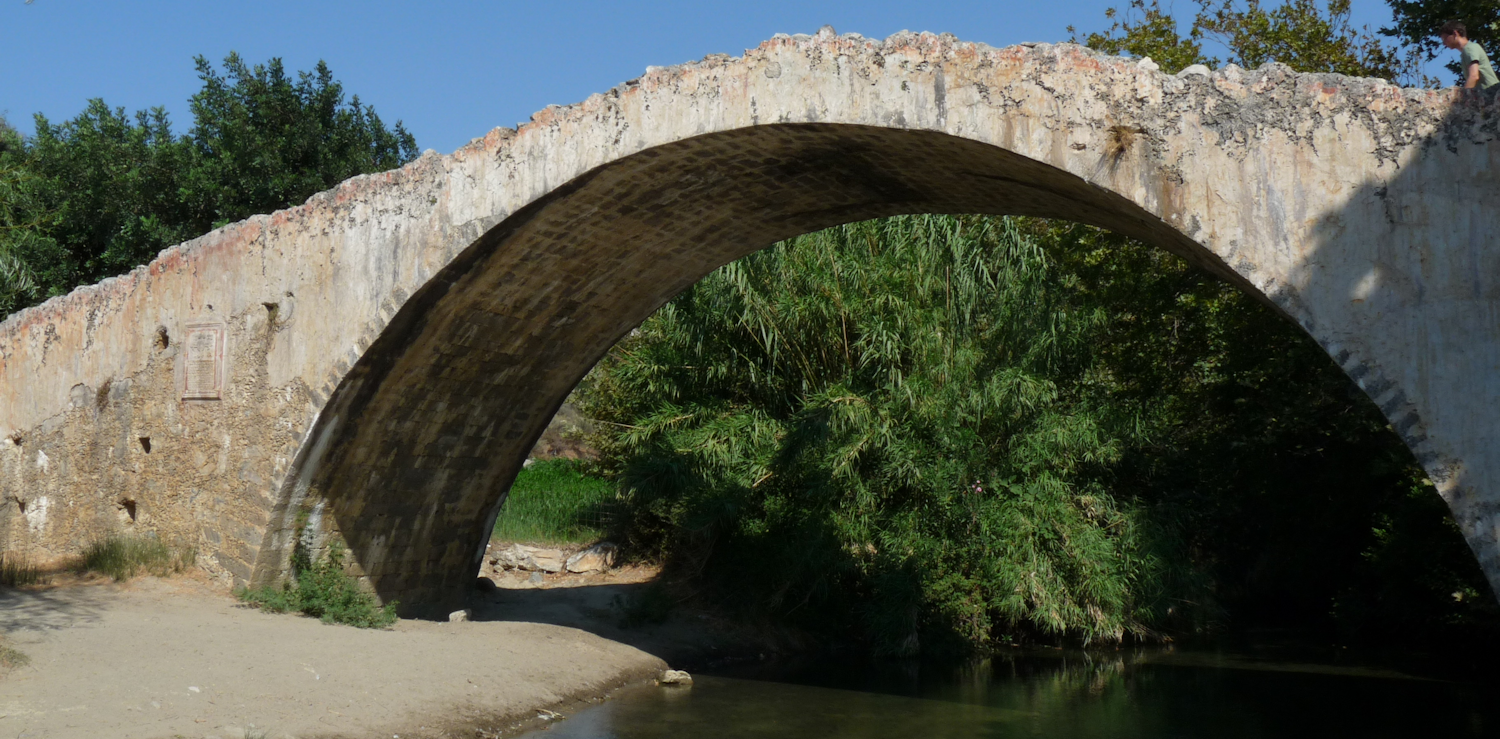Freshwater in Crete
Rivers and Lakes
The headwaters of the rivers in Crete lies in the high mountain areas at the center of the island their mouths either to the north in the Cretan Sea or to the south of the Libyan sea. Along the way, many of the rivers through millennia have carved the gorges in the landscape, that Crete is famous for. Or they flow more slowly through the valleys and plains, where the deposits fertile sludge. At the mouth, they often deltas, which are important habitats for some of Crete's rare plants and animal species.
Only a few of Crete's rivers are full of water year round. Most dries completely or partially out in the hot summer months. On the other hand, they can be filled very quickly during the winter torrential rain. There may be sudden, local flooding and a dry river bed can be filled with a torrent of water in under half an hour. A deadly phenomenon called a 'flash flood' that occurs when large amounts of precipitation falls on land with little absorption capacity.
The longest river on Crete is Anapodaris in the central and southern Heraklion Prefecture. Every year it delivers around 40 million cubic meters of water into the Libyan sea. Its name has to do with "something that goes contrary" and comes from an optical illusion. At the mouth it looks as though the river flows upwards and away from the sea.
Another important river in Crete is the Geropotamos River (Geropotamos, Messara), crossing the Messara plain south of Psiloritis and terminating in the Libyan sea. At the mouths there is a beach where the endangered loggerhead turtle lays its' eggs. And along the river course are wetlands, which are important habitats for plants and animals.
The Geropotamos river gave water to the Minoan settlement at Phaestos. Already in antiquity its water resources were heavily exploited. Some researchers believe that this has happened to such a degree that the groundwater in the area decreased. And that this contributed to the otherwise unexplained sudden depopulation of Phaestos, which have been identified.
The rivers were obviously important to the ancient Cretans and many myths about supernatural creatures became associated with them. The Karteros river that originates in the Psiloritis and runs out not far from Knossos was formerly calles Amnisos. There lived, according to some myths nymphs, which were therefore called amnisiades. They were part of the goddess Artemis' retinue. (Goddess of hunting and wildlife as well as the protector of young, unmarried girls).
Geropotamos (Rethymnon)
There is another river named Geropotamos, a name which means 'holy river'. It is the Geropotamos River at Rethymnon, situated only a few kilometers west of our holiday house. It has previously been called Mylopotamos or Milopotamos - and way back in ancient times it was called Oaxis. It rises in Psiloritis, crosses the villages Zoniana and Diskouri, runs past Garazo, Mourtzana and Perama before it reaches the beach between Panormos and Skaleta.
This river also appears in Greek mythology. The legend tells that when the goddess Rhea would bear Zeus, she seized the ground in pain during labor. It caused ten wizards to jump out of the ground, therefore called the idaean dactyls. Idaeane because they came from Mount Ida (Psiloritis) and dactyls from the Greek word for finger (daktylos). Where the river begins it is formed by five smaller streams coming from the mountains. Looking at it from above it resembles a huge distended hand. (With a little effort). This hand position is also a Greek gesture expressing scorn or contempt. In the Cretan dialect this gesture is called 'poulos' - and the place where the river is formed is thus called Poulou.
Geropotamos river is a small but important wetland area and part of the European nature conservation program "Natura 2000". On both sides of the river estuary are underwater caves that are home to Mediterranean monk seals. One of the world's most endangered species. And the beaches here is one of the biggest egg laying areas of the likewise endangerede loggerhead turtle in the Mediterranean.
On the steep cliffs along parts of the river you can find the endemic plant Diktamus (Origanum dictamus) and the river is home to the endemic Cretan water frog (Rana cretensis). The river is also home to rare birds such as Red-footed Falcon (falcon vespertinus) and Booted Eagle (Aquila pennata).
Lakes and reservoirs in Crete
In Crete, there is only one natural freshwater lake. It is Kournas lake, which lies south of Georgioupolis approx. 60 km west of our holiday house. Besides, a series of dammed, artificial lakes, which have become important habitats for several rare animal and plant species.
Kournas lake has a diameter of approx. 3.5 km. It is beautifully surrounded by mountains. The lake was formerly called Korisia after a nearby village, Korion. Kournas probably comes from Turkish and means ... lake.
Previously you could catch eels in the lake. Today you can rent a pedaloe and sail around in the crystal clear water instead. By Kournas live turtles and a variety of wading birds. The southwestern areas along the lake is a natural reserve.
Besides Kournas is a series of lakes and ponds that have been built to provide water for the surrounding farmland. They are now serving also as important wetlands where migratory birds, amphibians and other animals and plants live.
Bramiana lake at Iapetra on Crete's south coast has thus become Crete's largest wetland area as it lies on the migratory bird route. Votomos lake of Zaros village has become a popular destination, where you at nearby restaurants can get trout caught in the lake. And Agia lake at Chania is the place in Crete, where the greatest diversity of aquatic plants are found.

